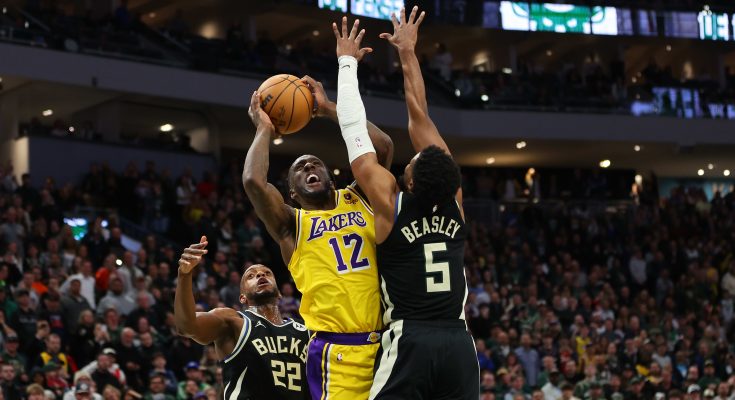Analyzing Milwaukee Bucks Power Forward Depth Chart Post Free Agency and How It Shapes Team’s Identity Heading Into Upcoming NBA Season
As the dust settles following the 2025 NBA free agency period, the Milwaukee Bucks have made a series of strategic moves aimed at strengthening their roster without overhauling its core. While much of the offseason attention has focused on big-name signings, trades, and superstar movements, smart teams like the Bucks have turned their focus to maximizing positional depth, balancing lineups, and ensuring readiness across the board. One area of particular interest heading into the upcoming season is Milwaukee’s power forward depth chart—a position that not only plays a crucial role in their defensive identity but also acts as a major offensive anchor due to the presence of their franchise superstar, Giannis Antetokounmpo.
The Bucks’ power forward position has long been defined by Giannis, who is not only the team’s best player but arguably the most dominant power forward in the league. His unique blend of size, speed, athleticism, and two-way excellence has made him the centerpiece of Milwaukee’s system for years. However, modern NBA success requires more than just a superstar at the top of the chart. It demands depth, versatility, and adaptability—especially in the long grind of the regular season and the ever-evolving chess match of the playoffs.
With that in mind, the Bucks entered free agency with a few clear objectives when it came to the power forward spot. They needed to find backup options who could bring defensive energy, spacing, and physicality, while also offering flexibility in terms of lineup combinations. Whether playing alongside Giannis in big lineups, filling in during injury management, or soaking up minutes in high-leverage bench units, depth at the four spot remains vital.
Unsurprisingly, Giannis remains firmly at the top of the depth chart. The two-time MVP and former Defensive Player of the Year is the undisputed starter and cornerstone of everything Milwaukee does on both ends of the court. While he is officially listed as a power forward, his role often transcends traditional positional labels. Giannis plays everywhere—initiating the offense like a guard, protecting the rim like a center, and defending multiple positions depending on the matchup. His ability to attack off the dribble, draw double-teams, and create open shots for teammates gives Milwaukee a unique advantage that few teams can match.
That said, one of the priorities this offseason was ensuring Giannis doesn’t have to carry such a massive load every night. Managing his minutes, particularly in back-to-back situations or during heavy travel weeks, is a strategic necessity for a team with championship aspirations. That’s where the Bucks’ depth behind him comes into focus.
Backing up Giannis at the power forward position is a mix of young talent, veteran experience, and role players who bring specific skill sets to the table. One of the key returning names in that rotation is Bobby Portis. While Portis is often slotted in as a center in small-ball lineups, he has played significant minutes at the four throughout his time in Milwaukee. Known for his toughness, rebounding, and ability to stretch the floor with a reliable mid-range jumper and improving three-point shot, Portis gives the Bucks a valuable option who can both complement Giannis or serve as his direct replacement when needed.
Portis also brings emotional fire and leadership to the second unit—qualities that help stabilize bench units during games when the starters rest. His ability to absorb contact, defend bigger bodies, and finish around the rim makes him a trusted piece of the rotation. He’s not a lockdown defender, but he competes hard and understands team schemes well enough to hold his own in playoff-caliber matchups. His versatility means he can also play alongside Giannis in dual-big lineups, giving the Bucks additional rebounding and physicality.
Another name that enters the power forward conversation this year is second-year player Chris Livingston. The former Kentucky standout spent much of last season developing in a limited role, but the Bucks are reportedly high on his upside. At 6’6″ with a strong frame and good athleticism, Livingston projects as a potential two-way contributor capable of playing both forward spots. While still raw in certain areas—particularly shooting and defensive awareness—he has shown flashes of potential as a slasher and on-ball defender. His continued growth could earn him spot minutes, especially in games where the Bucks want to rest veterans or experiment with younger lineups.
In addition to in-house development, the Bucks made a key offseason signing that adds another layer of depth at the power forward position: veteran forward Taurean Prince. Known for his three-and-D skill set, Prince provides Milwaukee with a reliable veteran who can defend multiple positions and knock down open shots from the perimeter. While not a traditional power forward by size, Prince has logged minutes at the four throughout his career in small-ball systems, including stints with the Minnesota Timberwolves and Los Angeles Lakers.
What makes Prince a particularly valuable addition is his ability to play next to either Giannis or Portis in flexible lineups. He’s a capable defender on switches, understands spacing principles, and doesn’t need the ball to be effective. His presence could allow the Bucks to run lineups where Giannis slides to the five and Prince plays the four, creating a faster, more switchable defensive unit that can keep up with smaller, quicker opponents. In playoff situations, such versatility can be critical for adjusting to different matchups without sacrificing defensive integrity or offensive spacing.
MarJon Beauchamp is another young player whose name might emerge in the power forward depth conversation, though he is more naturally suited to the wing. Still, in the NBA’s increasingly positionless style of play, players with size and length often see time at multiple positions. Beauchamp has shown defensive potential and athleticism that could be leveraged in experimental lineups where he plays as a small-ball four. If he can improve his shooting consistency, he may become a valuable rotational piece who can give the Bucks extra minutes across both forward spots.
The Bucks’ power forward depth is also shaped by how Coach Doc Rivers plans to approach lineups this season. Rivers, known for his ability to manage veteran players and build elite defensive teams, has options now that allow him to tailor his rotations based on matchups. Whether it’s big lineups featuring Giannis and Lopez, or smaller, faster groups with Giannis at the five and shooters around him, Milwaukee has built a forward rotation with both size and adaptability.
An important factor in this depth chart is injury management and the reality of an aging core. Giannis, Portis, and Lopez are all players with significant mileage, and the Bucks have to be strategic about their usage throughout the season. Having trustworthy power forward options ensures that the team can withstand the rigors of the regular season without overextending their stars. This depth will also be tested during stretches of the season when injuries inevitably occur or when rest days are necessary.
There’s also the possibility that Milwaukee adds another name to the mix before training camp, either through a late free agency signing or a non-guaranteed invite. The Bucks have shown interest in defensive-minded forwards who can fill niche roles, and if the right player becomes available at a minimum deal, the team could further solidify its rotation. Someone like Gary Clark or even a returning Thanasis Antetokounmpo (if re-signed) could provide emergency depth and practice competition, though their actual game impact would be limited.
In all, the Bucks’ power forward depth chart is quietly one of their strengths heading into the 2025–26 season. With Giannis leading the charge, the position is in elite hands. Behind him, the combination of Bobby Portis, Chris Livingston, Taurean Prince, and other versatile forwards gives Coach Rivers multiple options to deploy based on the flow of the game, the opponent, and the situation. In a league that continues to emphasize flexibility and matchup-based strategies, Milwaukee’s depth at power forward allows them to remain competitive and dangerous regardless of who is on the floor.
As the season draws near, the Bucks will likely continue refining their rotations and experimenting with combinations during training camp and preseason. But one thing is clear: they have invested wisely in building a power forward room that complements their superstar, enhances team identity, and prepares them for the challenges ahead. With Giannis at the helm and a capable cast behind him, Milwaukee’s power forward depth looks poised to play a major role in their pursuit of another championship.



